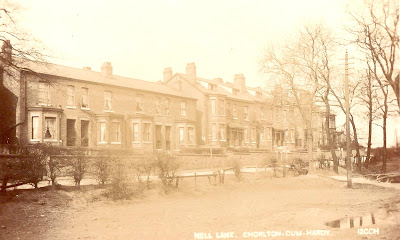I first became interested in the work of the Manchester and Salford Boys’ and Girl’s Refuge when I discovered that they were part of the programme to resettle young people in Canada.
Between 1870 and 1930 something like 100,000 children were sent from Britain to Canada. It was a policy which did and still does churn up some powerful emotions.
Opposite; Emma shortly after she had been rescued from the streets
Supporters argued that it was a wonderful chance to give destitute, neglected and abused children a second chance. Many of those that went were rescued off the streets, plucked from awful home conditions or taken away from institutions.
Critics at the time argued we were just attempting to solve child poverty by banishing the children to a far away corner of Empire where they were used as cheap labour abused and exploited all over again and in many cases denied their own past.
The story is shot through with villains, a few heroes, some wonderful success stories and much suffering, some of which is only just beginning to come to light through the diligent research of family members.
Opposite; an emigration party 1908
Now I have pretty much made up my mind that at best it was a misguided policy which arose from a genuine desire to do the right thing by these children but which also fitted a century’s old and consistent policy of removing our so called problems to other places and muddled up the idea that a fresh start must be in a rural setting.
Nor was it a universally accepted policy at the time. Socialist Poor Law Guardians argued against because it was not addressing the real problem of poverty and inequality, raised concerns about the monitoring of the young peoples’ welfare and raised complaints from the children themselves.
Many of whom suffered in the harsh winters working in an environment which was a million miles away from the urban experience they had grown up in.
Opposite; the Post Office Beaver Rapids
But it happened and the Refuge made their own pictorial record which has been brought to light in their wonderful blog http://togethertrustarchive.blogspot.co.uk/ here can be found pictures of the children rescued from the street, their time in a secure place and for some the onward journey to Canada, where as the archives show there were success stories.
Like the other organisations involved in the programme the Refuge was convinced that for some young people this was the right choice.
Pictures; courtesy of the Together Trust
















































